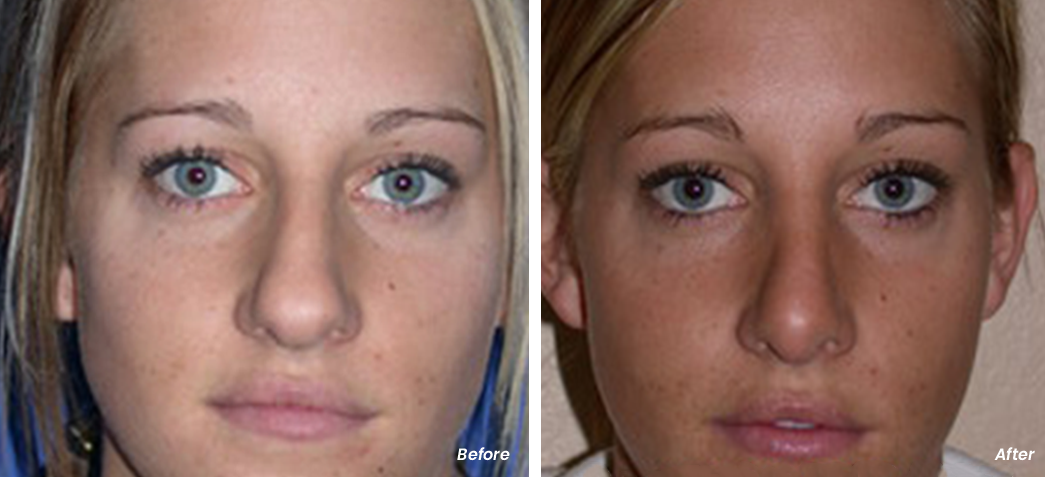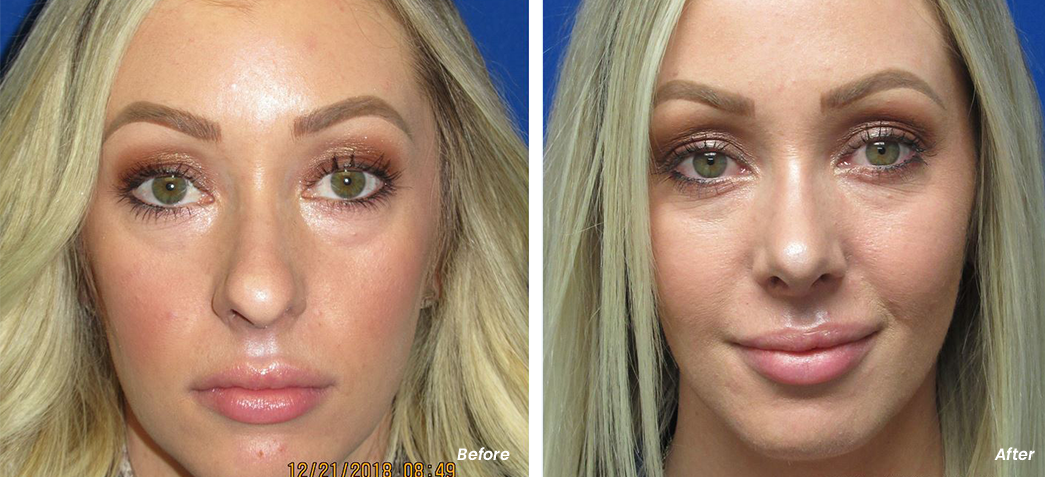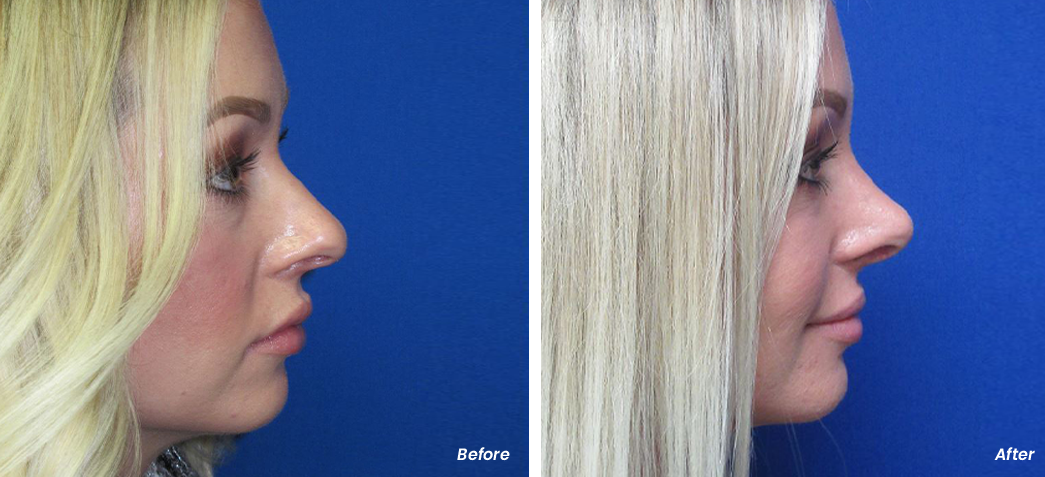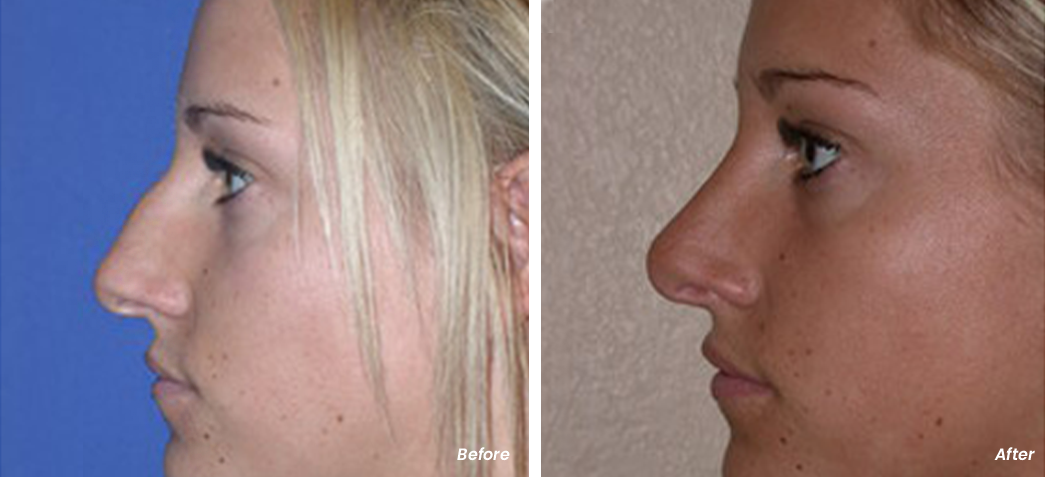
Plastic and reconstructive surgeon Dr. Adam Boettcher discusses how rhinoplasties reduce the appearance of wide nose bridges and address other cosmetic concerns
Facial beauty and nasal shape preferences are subjective concepts, with variations across cultures.
Every rhinoplasty patient I see has unique surgical goals, ranging from minor cosmetic enhancements to improved breathing. It’s my role as a plastic surgeon to help enhance their natural beauty to help them feel more confident. Some patients seek rhinoplasty to make their wide nose bridge thinner. Let’s explore what cosmetic nasal surgery entails and some of the general anatomical principles I talk to patients who are considering rhinoplasty.
“Ideal” Nasal Proportions to Consider
Remember that beauty is diverse and multifaceted. When we talk about “ideal” proportions, it’s important to consider that everybody has unique qualities that contribute to their attractiveness and individuality. Furthermore, aesthetic preferences can vary greatly among different cultures and genders. Here are some general guidelines we consider when evaluating nose proportions with patients:
- Nasofacial Angle: This is the angle formed between the forehead and the nasal bridge. It typically measures between 120 – 130 degrees in men and 130 – 140 degrees in women.
- Nasal Width: In many cases, patients aspire for a nasal width that is approximately equal to the distance between the inner corners of their eyes.
- Nasal Length: The measurement between the nasion (the point between the eyes) and the tip of the nose. Ideally, we want this length to be proportionate to the overall facial height, without being too long or too short.
- Nasal Projection: How far the nose extends from the face. Looking at a patient’s profile, we consider their nasal projection in relation to their forehead and chin, with the goal being to achieve harmonized and balanced facial proportions. The ideal projection is 9-14 mm from the cornea.
- Nasal Tip: When we talk about the nasal tip, we’re considering the shape and proportions of the tip of the nose. Nasal tips can be triangular, boxy, bulbous, or ball-shaped. In women, a slightly upward tip rotation and triangular tip can be considered aesthetically pleasing.
- Nasolabial Angle: The angle between the upper lip and the nasal tip.
When examining nasofacial measurements, we also consider nasal deviation, bony base width, nasal bone contour and length, alar rims, alar base width, nostril shape, basal aesthetic lines, and chin projection. For more detailed information about comprehensive nasofacial analyses, here’s a good resource published in PRS Journal.
During your rhinoplasty consultation, your plastic surgeon will likely take lots of measurements and photographs from different angles. We work with each patient individually to assess your unique facial features, discuss your expectations, and provide recommendations based on your specific anatomy.
Rhinoplasty: What to Expect
During a rhinoplasty procedure, the patient is given IV sedation or general anesthesia by an anesthesiologist. The surgeon will make incisions either inside the nose or along the columella under the nose, providing access to the cartilage, bone, and tissues of the nose to reshape it. The size of the nose can be reduced by removing bone or cartilage, and cartilage grafts may be used to reshape the contours. If the patient has a deviated septum, the surgeon will straighten out the nasal passages to improve airflow. The surgeon will then redrape the nasal skin and tissue and close the incisions to complete the procedure.
Rhinoplasty patients typically feel ready to return to work within one to two weeks. Bruising and swelling are normal following the procedure and usually clear up within two weeks.
Why Get a Rhinoplasty?
Rhinoplasties can address functional and cosmetic concerns by:
- Improving nasal airflow and breathing by correcting a deviated septum.
- Addressing nasal asymmetry.
- Resizing the nose in relation to the face.
- Reshaping the nose profile to smooth the bridge.
- Straightening the nose.
- Creating an appealing nasal tip.
- Resizing nostrils.
Open Vs. Closed Rhinoplasty Surgical Approaches
Rhinoplasties can be complex cases and vary greatly for each patient. Every millimeter can make a significant difference in the end result, requiring surgical precision and finesse.
In a closed rhinoplasty all of the incisions are hidden inside the nose. Through a closed approach, we can perform osteotomies, correct septal deviations, and reduce dorsal height or correct dorsal humps.
For an open rhinoplasty we make incisions inside the nose, as well as a small incision under the columnella. Through an open approach, we can reshape the tip cartilage, graft cartilage, and make wide nasal bridge adjustments. Open rhinoplasties offer greater access to nasal structures and leave minimal scarring because incisions are concealed in natural contours underneath the nose.
Rhinoplasty for Wide Nose Bridges
Ideally, the bony base width of the nose should be 80% of the alar base width, the distance between the alar creases on the outer sides of the nostrils.
In many patients, we do a lateral osteotomy through either an open or closed rhinoplasty approach to narrow a wide nasal bridge. A clinical review of over 1,600 rhinoplasties showed that double lateral osteotomy is useful in managing asymmetrical nasal walls, patients with prominent and thick maxillary processes, and large and wide nasal bridges. During a rhinoplasty osteotomy we make small cuts in the bone to reposition the bone in the upper portion of the nose. This may involve also reducing the dorsal height, removing dorsal humps, or rasping down bone and cartilage to achieve the patient’s desired nasal contour. Cartilage grafts can also provide additional contouring and nasal support to open up the air space and help patients breathe easier.
Tiplasty for Wide Nasal Tip
Some patients with wider noses may also want to reshape their nasal tip. Through a cartilage resection or cephalic trim, we can change the rotation and thickness of the nasal tip. Suturing the tip of the nose can also narrow it, making it more triangular, defined, and slimmer. Tiplasties on their own are powerful procedures that can dramatically alter the appearance of the nose. Talk to your plastic surgeon about your goals to see if a tiplasty will achieve your desired results, or if more in-depth nasal reshaping is necessary.
Non-Surgical Rhinoplasty
Nose filler, also known as non-surgical rhinoplasty or liquid rhinoplasty, involves injecting dermal fillers into the nose to alter its shape or improve its appearance. This is a bit of a controversial topic among plastic surgeons and other cosmetic injectors, but my personal take is that nose filler risks usually outweigh the benefits.
The nose has a complex network of blood vessels and improper injection technique or placement of filler can lead to vascular complications. Injecting filler into a blood vessel can block blood flow and potentially cause tissue damage, necrosis, or even blindness if the filler travels to the eye area. While these complications are rare, they are serious.
Unlike surgical rhinoplasty, which allows for precise and controlled modifications, nose filler is less predictable and consistent. It’s also a temporary solution. Injected fillers gradually break down, which means maintenance injections are usually required to sustain the desired appearance, leading to ongoing costs (roughly $800 – $1,500 per appointment) and potential risks with each session.
Before and After Cosmetic Rhinoplasty
This patient wanted to make her nose appear smaller, reduce a slight dorsal hump, and rotate and define their nasal tip.
In this second patient, we reduced the dorsal hump, slightly narrowed the nasal bridge, rotated the tip upward, and made the patient’s bulbous nasal tip shape slimmer and more triangular.

Book a Rhinoplasty Consultation Today
Our experienced, board-certified plastic surgeons have performed hundreds of rhinoplasty procedures. We would love to bring you in for a functional or cosmetic rhinoplasty consultation to discuss your desired outcomes and treatment options.







